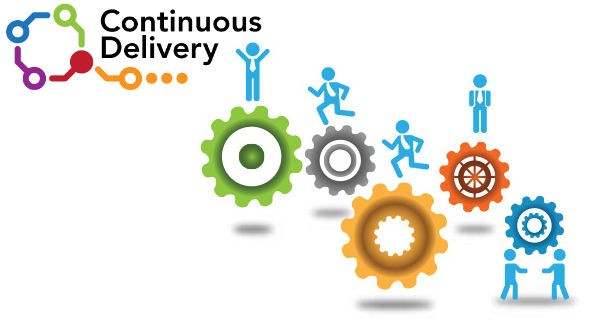Introduction
The Software Development Process has been re-imagined and updated over the years and new methodologies have risen to claim the challenge.
CD or Continuous Delivery is one of them. Not to be mistaken with Continuous Deployment, which we will also mention.
Continuous Delivery strives to be more agile, reliable and well maintained than its predecessors.
But as with anything, there are also disputes about what the actual sacrifices of such improvements are.
In the following article we will explain everything you need to know in order to see if this type of methodology is a right fit for your business.

What Is Continuous Delivery
CD focus on making the entire process more agile by putting its accent on more often releases instead of big large chunks of updates which in turn cause the software to have unpredictable bugs which could have been ironed out sooner. The reasoning behind this is that smaller chunks are easier to examine than bigger ones, thus helping in the finding of bugs. This gives the users less software risk to deal with and more dynamic and flexible solutions. The entire process is changing throughout the industry and by adopting new ways such as Continuous Delivery, you make sure that you and your developers are on top of your game.
Benefits Of Continuous Delivery
We’ve explained that it gives tons of benefits, but what are those benefits exactly. Well let’s start with the obvious ones:
- Increased Quality
By making sure that multiple segments are being worked on at once, such as Optimization, Security, Stability and Stress Testing the product gets an overall boost on Quality. Long gone are the days when one team had to wait the other to finish something and then only to find out that they have to go back and re-do the whole thing, which ultimately wastes time and money.
Which brings us to the next point.
- Less Cost
If we make sure that everything is working fluidly and most of the generic tasks are automated, we waste less time, resources and eventually money on Ad Hoc fixes and upgrades.
- Less Risk
If many of the everyday solutions are being checked for and streamlined in to automation, then the risk level automatically goes down.
- Faster Marketing
If Integration & Regression Testing is implemented in a daily routine, then consuming often times weeks on end for a phased software delivery becomes a thing of the past.
- Betterment of Overall Product
By making sure that everything is more economic, a lot more easily handled, better automated we make sure that the overall product will get better, since there is more time to focus on more important things.
- A More Satisfied Team
The most valuable side effect of all is that the team will know exactly what they should do and how to do it. Depriving them of useless tasks will make sure they can focus on the more relevant tasks at hand.
As you can see the Software Development Process is starting to differ from what it was, by employing these new found techniques & methodologies we are making our product and our teams better.
How To Apply Continuous Delivery
In order to set up CD properly, there are a few things to keep in mind.
First, companies need to make sure what their end goals are and if implementing CD will help them in any way achieve those very same goals.
In order to know how to begin the entire process, we need to have a good schedule of builds, updates, cycles, reviews as well as implement new tools and Gap Identification processes.
Choose your CI wisely and develop a proper work-flow to fit your methodology, while determining the exact timing for automation which could prove invaluable for quicker release cycles.
Conclusion
By researching what you need and how you can implement your new Continuous Delivery Methodology properly, you may just boost your team’steams performance by a large margin. Hopefully this article has given you an insight in just how you can make those choices.


